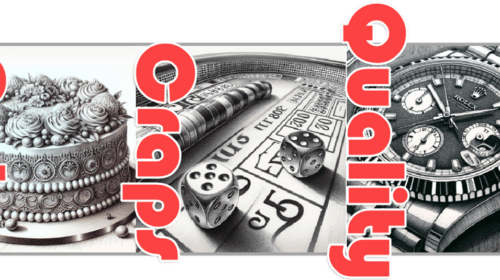This article describes how to greatly improve your resume and cover letter at a high level. It also describes the benefits of using a career coach. This article draws from my first-hand job-seeking successes and failures over the last 40 years. I am not a professional recruiter or resume writer; however, my hope is that you will leverage my successes to find employment and success in your career.
Your Resume
It is difficult to prepare a compelling and succinct resume. This is true for any professional: from someone who has almost no experience to someone with a long career and a variety of accomplishments and experiences, and everyone in between.
A resume is required when seeking most employment (i.e., even as a formality). It is a documented representation of your professional self and should reflect your professional experience and skills in a compelling and succinct manner. At best, your resume gets you an interview. And the interview gets you the job. At worst, your resume disappears into the abyss – ignored or forgotten – never to be mentioned or seen again by anyone.
A recruiter usually compares candidates’ resumes and then shares them with the Human Resources (HR) manager, department or client manager, and others. Thus, a resume can make or break an employment opportunity if it does not correctly reflect your professional self or meet recruiter‑employer expectations. Like you, I have experienced the making and breaking first-hand. It has been heartwarming and heartbreaking, respectively.
Over the years, I continuously updated my resume to ensure it is perfect for each job application. However, no document is ever perfect.
Generally, all resumes must be:
- Grammatically correct, with no spelling mistakes;
- Reviewed, and double- and triple-checked to correct errors;
- Limited to three pages at the most; and,
- Written to suit the role.
| Pro tip 1: | Updates and changes to your resume may inadvertently introduce errors or inconsistencies. Be sure to proofread your resume holistically after making changes. |
Several sections describe the methods I used to improve my resume over the years. Employ these methods to improve yours!
Be Clear
Dictionary.com defines clarity as clearness or lucidity as to perception or understanding; freedom from indistinctness or ambiguity. The ability to be clear is a common trait of a successful professional. Antonyms (opposite meanings) of clarity are confusion, inaccuracy, obscurity, and unintelligibility.[1]
In 2020, in an interview follow-up meeting, I was informed by my recruiter that I was not being considered because my resume was confusing. A resume clearly summarizes your professional self. Why would a recruiter hire someone who is unable to summarize their experience clearly? This begs the recruiter to ask the question: what other unclear work will this candidate produce? How can I summarize the skills of this candidate for the employer when I cannot determine them myself?
After identifying the confusing portions of my resume, I removed them. In this case, I removed references to my incorporated company and identified only client and employer names in my resume’s Experience section. I also ensured that my recent roles fully described all my various experience.
| Pro tip 1: | Have a disinterested party proof-read your resume. Is it unclear to them? Do they ask many clarifying questions? If yes, you may need to revise or rewrite it. If no, this is a good sign! |
| Pro tip 2: | Take resume criticism seriously and act on it, especially if it is from a recruiter. |
Be Concise
Dictionary.com defines concise as expressing or covering much in few words; brief in form but comprehensive in scope. Being concise is critical to representing your professional self. Convey your meaning with the fewest words possible. In this context, less is definitely more. The antonym of concise is wordy.[2]
I have reviewed 12-page resumes, which listed every client and project in the candidate’s work history. This may highlight their extensive experience but critically, it also demonstrates an inability to communicate concisely because of the overwhelming amount of distracting detail.
Be Plain: Use Plain English
Like all business communications, a resume should use straight-forward language (plain English). It must contain clear and concise prose written with the reader in mind, and with the right tone of voice (i.e., write like you are talking to the reader). If you resume uses plain English, the recruiter can quickly find the relevant data, understand it the first time, and use these data to justify and propose an interview. Which, after all, is the point. Put another way, using plain English makes the recruiter’s job of finding you a job easier.
Plain English uses:
- Active voice:
Correct example (active voice): I authored the plan.
Incorrect example (with passive voice): The plan was authored.
Like the above passive voice example, most sentences that use passive voice lack a subject and use a verb phrase (e.g., was authored) instead of a verb (.e.g., authored). Further, in this example, no one knows who authored the plan. This creates ambiguity for the reader.
- Appropriate words:
Avoid using abbreviations and acronyms that readers will not understand. For example, do you know what the following means?
“The FAT NCR was also an OFI.”
You probably don’t, and neither will the recruiter. Avoid shortened word forms.
- Short bulleted or numbered lists, like this one.
- No nominalizations:
Example with no nominalizations: I used my skills.
Example with the nominalization utilized: I utilized my skills.
- Short sentences.
Short sentences are easy to read and remember.[3]
| Pro tip 1: | How to write in plain English is an excellent resource for writing a resume and other business documents. |
Be Appropriate
Dictionary.com defines appropriate as suitable or fitting for a particular purpose, person, occasion, etc. Submitting an inappropriate resume almost always results in rejection.[4]
I have reviewed resumes that were prepared as if the candidate was applying for full-time employment instead of for the short‑term contract assignment for which they were being recruited. Specifically, they would be assigned as a temporary resource through an agency – not hired as an employee. How inappropriate and unsuitable! This wastes the recruiter’s time and reduces the likelihood the candidate will be considered for the role. Worse, it makes the candidate seem lazy. Who would hire someone who appears to be or is lazy?
| Pro tip 1: | How to Write an Effective Consultant’s Resume expands on a consultant vs an employment resume. Read this after you have been hired as a consultant or contracted resource! |
Be Current
Dictionary.com defines current as new; present; most recent. Using old formats and writing styles are red flags for a recruiter. Antonyms of current are antiquated, dated, old, and out-of-date.[5]
Writing styles change over time. Many professionals, unfortunately, use an old, dated format for their resumes. Times New Roman font, for example, was once common and widely used. No longer. Using this font today makes a resume look retro, which is likely not your goal. I was guilty of using old conventions and later updated my resume to use Arial font. The resume I was using in 2009 was great but by 2019 it looked dated! Today, conventional and modern fonts include these sans-serif fonts, which are known for their clean, professional look and overall easy readability:
![]() [6]
[6]
| Pro tip 1: | Keep your resume up-to-date – you never know when you may need it next. |
Be Found Electronically (Applicant Tracking Systems)
In the modern workforce, a technology-savvy recruiter uses an applicant tracking system (ATS) to scan resumes. An ATS helps companies organize and track candidates for hiring and recruitment purposes. These systems allow businesses to collect information, organize prospects based on experience and skill set, and filter applicants. More than 90% of Fortune 500 companies are currently using an ATS.[7]
An ATS works by searching for industry- or job-related and other keywords in your resume. By including keywords in your resume that an ATS will find, you improve your chances of acquiring an interview and being hired. An ATS uses action verbs, power words, and keywords to electronically identify an applicant’s achievements, capabilities, and skills. A detailed discussion of these words can quickly become complex and lengthy, and is beyond the scope of this article. If you are interested in reading more about this topic, see the pro tip at the end of this section.
An ATS helps recruiters by automatically filtering hundreds or thousands of resumes down to those that match actual job requirements. Put another way, by employing automated filtering, an ATS automatically creates a short list of suitable candidates.[8]
Importantly, heed the top 5 ATS compliance rules – which cautions to NEVER do the following:
- Never send a resume to an ATS or online job application (including databases like Monster or Rigzone) using anything other than a .txt (Notepad file) or properly formatted .docx (Microsoft Word) file;
- Never use a .pdf file (portable document file) because it is a photograph of information (not the information itself);
- Never place information in the header or footer where it cannot be read by the ATS (only place it the document body);
- Never copy and paste the job description into the resume or use white font (hidden font) to manipulate the ATS (instead use 1,000 – 2,000 keywords to describe yourself); and,
- Never send a resume with information hidden in a table or text box where it cannot be read by the ATS.[9]
| Pro tip 1: | Consider using this ATS resume writer:
Carol Bird with RigBoyz Employment Network will incorporate ATS requirements into your resume using keywords so you can be found electronically. |
Be Professional: Employ a Technical Writer
Even a seasoned professional with decades of experience can struggle to produce a well-written resume. You may have a similar experience. This is common because, in both cases, the writer may be too close to the subject matter to write objectively about it. It is possible for a professional to be an expert in a discipline and an unskilled writer.
In 1995, I enrolled in a career development program, which helped me learn how to describe key experiences and skills in a resume. In 2009, I acquired the services of a technical writer who provided a resume template that I have used ever since. She was very knowledgeable and, by interviewing me and editing several drafts of my resume, crafted a detailed and professional resume that got results.
A good technical writer ensures your resume is:
- Appropriate for the role;
- Clear, concise, complete, correct, compliant, consistent, and compelling;
- Formatted correctly;
- Grammatically correct;
- Organized correctly; and,
- Prepared with appropriate ATS keywords.
Don’t know a technical writer? Search LinkedIn to identify many suitable resources. Where possible, use a local resource who is familiar with current resume formats and the field in which you are a candidate. Use local talent because a technical writer based elsewhere, while likely more cost‑effective, is:
- Likely less knowledgeable;
- May not have English as their first language; and,
- Will usually produce lower‑quality results.
It takes a skilled technical writer to structure and present detailed technical information clearly and concisely. A few hundred dollars is negligible when your improved resume results in employment.
| Pro tip 1: | Consider using this experienced Canadian resume writer:
Treena (Goel) Elliott with Resume Transformations has reviewed more than 100,000 resumes. She will make your resume shine and get you shortlisted. |
Be Memorable
Dictionary.com defines memorable as worth remembering; notable. Given the competition, if you are not memorable – you will be forgotten. Antonyms of memorable are boring, commonplace, forgettable, ordinary, undistinguished, uninteresting, and unspectacular.[10]
Is the overall look and feel of your resume boring or unappealing? If yes, others will too, and your resume may not be remembered or retained. To make your resume memorable, consider:
- Including a professional photograph in business attire, smiling and exuding confidence;
- Highlighting successful metrics and impressive numbers;
- Hiring a graphic artist to make your resume more impactful;
- Hiring a technical writer to improve writing; or,
- Using an appealing color scheme or graphics.
To make your resume stand out and demonstrate individuality, it is tempting to employ exotic designs and formatting elements. And your resume should stand out. However, if you are not an artist or have not been trained as one, your formatting choices may result in problematic formatting results. If this is your experience, hire a graphic artist.
Further, to create a suitable resume, consider the audience and context. For example, an actress and a finance manager will use dramatically dissimilar presentations and resume types when applying for employment because their audiences are completely different.
| Pro tip 1: | Acquire free formatting tools from Canva and MS Word. |
| Pro tip 2: | Hire a graphic artist. |
| Pro tip 3: | Hire a photographer to take your resume photograph. Ensure you are exuding confidence, smiling, and wearing suitable business attire. Use this photograph in your resume, on LinkedIn, and in other job-seeking documents and forums. |
Be Linked In
Facebook is to social media as LinkedIn is to professional employment networks. If you do not have a LinkedIn account, consider creating one. It’s free. Many recruiters find LinkedIn useful for acquiring additional background and detail about your professional self because it is omnipresent and accessible. You may already use it to familiarize yourself with personnel you are about to meet before you meet them. I have used LinkedIn to understand the educational and professional backgrounds of recruiters and interviewers, and to establish some relatable, common ground (e.g., the interviewer and I graduated from the same university). If you do have a LinkedIn account, consider including a link to it in your resume.
Be Confidential
Neither a resume nor cover letter (Section 2) needs to provide your full home address. It is sufficient to provide a phone number, email address, city, province, and postal code.
| Pro tip 1: | After getting hired, provide additional personal information (e.g., a full address) as required by your new employer. |
Your Cover Letter
No article about resume improvement is complete without discussing a supporting cover letter. Some professionals believe that a cover letter is unnecessary. A cover letter is a necessity with every job application because it succinctly introduces your professional self, and describes why you are suitable and interested in the opportunity. Use a cover letter to summarize experience, education, skills, suitability, and to provide an overview of your professional self that is not included in your resume. A cover letter distinguishes you from other candidates that do not provide a (well-written) cover letter, and increases the likelihood of getting hired.[11] It also is an opportunity to:
- Demonstrate that you take the role seriously enough to write a personalized letter to the recruiter;
- Describe your availability for an interview (e.g., next week), to start work (e.g., next month), and your desired schedule (e.g., full time or part time);
- Emphasize your most important accomplishments and expertise; and,
- Summarize your potential employer’s requirements alongside your qualifications (Table 1).
Table 1: Example – A Summary of What the Recruiter Needs vs. What You Bring
| You Need | I Bring |
| Relevant education and certifications | SAIT Welding Engineering Technology diploma with ASET RET, CWB Level 3 (API 650, ASME VIII/IX/B31.3, CSA W47.1/W59 and Z662), API 510, and ABSA ISPVPPI certifications |
| Quality and inspection experience including oil & gas, oil sands, and pipeline projects, and other sectors | Many years’ experience with the production, construction, and in‑service use of pressure and structural equipment with active development of ideas for continuous improvement |
| Strong analytical, problem-solving, and communication skills | Competent to speak to a wide audience, address technical issues, efficiently use time and resources, and publish project and other documents |
| Creator, innovator, leader, team‑player, and client-focused connector with a diplomatic touch | Demonstrated success as program manager and team leader with several major EPC oil sands and pipeline projects |
Like a resume, your cover letter must:
- Follow the rules in Your Resume section;
- Be reviewed by a colleague or a technical writer; and,
- Be sent to a specific person (ideally).
If the cover letter recipient’s name is unknown, address it to Personnel Recruiter.
| Pro tip 1: | If no requirements are provided when applying for a role – even better! Describe what the requirements should be (write a job description) and tailor them to suit your experience and skills set. For example, if you have over 10 years’ experience, state that the role requires at least 10 years’ experience. |
Consider a Career Coach
Find yourself at a crossroads? Does any of the following describe you?
- I need a new challenge or opportunity;
- I recently completed a post-secondary education or other training;
- I require support because I have been working in the same role for many years; or,
- I want to make a change to my lifestyle or workstyle.
Before writing a resume, first determine your long-term career goals. Need help or ideas? Engage a career coach. A good career coach will help you plan and achieve career goals. They inspire and motivate. They show you where to start and keep you focused on your plan. After you have a career plan, write your resume with this plan in mind.
| Pro tip 1: | At a crossroads? Hire a career coach. After this, write your resume. Your resume should reflect career goals established with your career coach. | |
| Pro tip 2: | Consider using this first-ever recipient (in Canada) of the Consumer Choice Top Service Provider Award for Life Coaching:
Christopher (Topher) Lawrence with Change My Life Coaching provides coaching that positively impacts every aspect of one’s career and life. |
Conclusion
There is much more to preparing an effective cover letter and resume than is described in this article. Searching the Internet will produce many more helpful ideas and useful resources.
Use a career coach and technical writer. Alternatively, ask a colleague to proofread your cover letter and resume, and request feedback. Update your outdated cover letter or resume quickly by asking a colleague who has recently experienced a successful career transition to provide their resume so you can modify it for your use.
The advice shared in this article has helped many colleagues and me achieve success in our careers. I hope this article is similarly helpful to you.
References
- Dictionary.com https://www.dictionary.com/browse/clarity
- Dictionary.com https://www.dictionary.com/browse/concise
- Plain English Campaign. How to write in plain English. http://www.plainenglish.co.uk/files/howto.pdf
- Dictionary.com https://www.dictionary.com/browse/appropriate
- Dictionary.com https://www.dictionary.com/browse/current
- Tynan, Lisa . What Are the Best Fonts for a Resume?. TopResume. https://www.topresume.com/career-advice/best-fonts-for-resume
- What Is an Applicant Tracking System?. https://www.jobvite.com/blog/recruiting-process/what-is-an-applicant-tracking-system/
- How to Use Resume Keywords: The Top 20 ATS Keywords. https://www.rezi.ai/posts/ats-resume-keywords
- Bird, Carol. The Devastating Truth! Why YOUR Resume is not Getting you Interviews and HOW you must fix it now! (Edition 4, 2022). LinkedIn. https://www.linkedin.com/pulse/devastating-truth-edition-2-2020-why-your-resume-getting-carol-bird/
- Dictionary.com https://www.dictionary.com/browse/memorable
- Hanna, Kellie. How to Write a Cover Letter. Resume Now. https://www.resume-now.com/job-resources/cover-letters/how-to-write
Roy O. Christensen is a Welding Engineering Technologist who has over 35 years’ experience with oil and gas, pipelines, and other projects. He has authored countless instructions, manuals, plans, proposals, reports, specifications, and other documents that continue to drive success for many projects. He is the founder of the KT Project, which saves organizations significant money and time, by providing key resources to leverage expert knowledge transfer for successful project execution.










